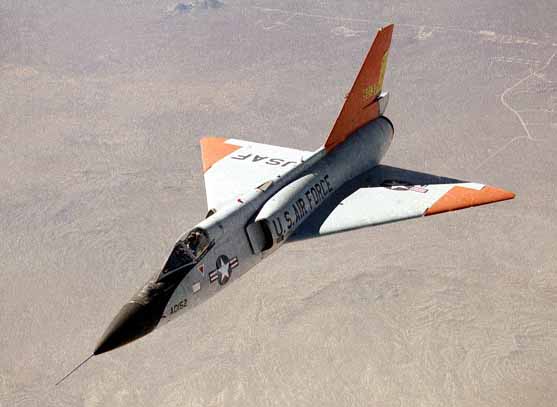|
|
|
 |
The F-106 all-weather interceptor was
developed from the Convair
F-102 "Delta Dagger." Originally designated the
F-102B, it was redesignated F-106 because it had extensive
structural changes and a more powerful engine. The first F-106A
flew on Dec. 26, 1956, and deliveries to the Air Force began in
July 1959. The F-106 uses a Hughes MA-1 electronic guidance and fire
control system. After takeoff, the MA-1 can be given control of
the aircraft to fly it to the proper altitude and attack
position. Then it can fire the Genie and Falcon missiles, break
off the attack run, and return the aircraft to the vicinity of
its base. The pilot takes control again for the landing.
The principal mission of the F-106B was
to function as a pilot proficiency trainer while maintaining
full tactical capabilities for the interception and destruction
of hostile aircraft and missiles. The F-106B has all-weather and
day or night characteristics. Production ended in late 1960 after 277 F-106As and
63 F-106B
had been built.
|
|
|
|
